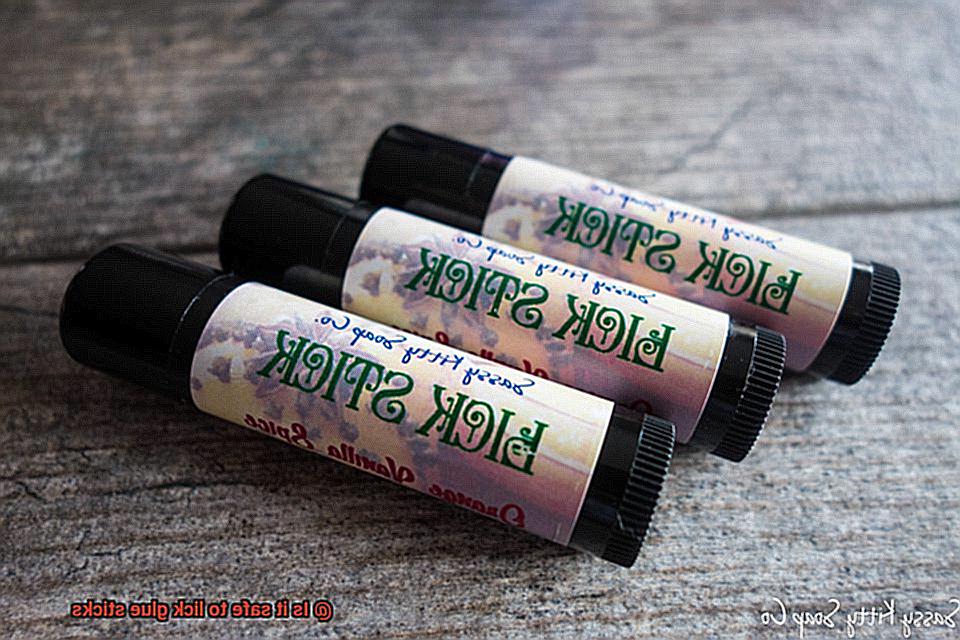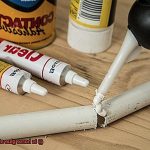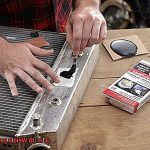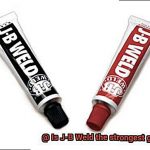Glue sticks, those versatile tools that stick things together and fuel our creativity, are everywhere – in classrooms, offices, and craft rooms. But here’s a burning question: is it safe to give one a little lick? Maybe you’ve seen someone do it and wondered if there are any risks involved. Well, get ready for an adventure as we dive into the world of glue sticks and uncover whether they’re harmless or potentially hazardous when met with a curious tongue.
We’ll explore the secrets behind glue stick formulations – their purpose, ingredients, and intended usage – to give you all the facts you need. Whether you’re an artist searching for inspiration or just plain curious about everyday products, this comprehensive investigation will finally answer the age-old question: should you satisfy your curiosity by licking a glue stick or leave it untouched?
What are Glue Sticks?
Contents
- 1 What are Glue Sticks?
- 2 Potential Health Risks of Ingesting Glue Stick Adhesive
- 3 Keeping Glue Sticks Away from Children
- 4 What to Do if Someone Accidentally Ingests Glue Stick Adhesive
- 5 The Dangers of Licking Glue Sticks
- 6 Edible Adhesives for Culinary Purposes
- 7 Takeaways and Tips for Using Glue Sticks Safely
- 8 Conclusion
Glue sticks, the beloved adhesive tool found in schools, offices, and households worldwide, offer a convenient and mess-free way to bond materials together. In this comprehensive guide, we will delve into the wonders of glue sticks, exploring their composition, ease of use, safety precautions, specialty variations, and their wide range of applications.
Composition and Ease of Use:
Cylindrical in shape, glue sticks are crafted from a solid adhesive material that bears a striking resemblance to wax. This adhesive is a masterful blend of polymers, resins, and other carefully selected ingredients. When pressure or heat is applied to the glue stick, this magical concoction activates, transforming into a sticky substance that adheres seamlessly to surfaces. Twist the bottom of the glue stick, and voila. The adhesive emerges effortlessly, allowing for precise application with no mess or spillage.
Safety Precautions:
While glue sticks are generally safe for use on a variety of materials such as paper, cardboard, and fabric, it is essential to exercise caution. It is crucial to remember that glue sticks are not meant for consumption. The adhesive may contain chemicals that can be harmful if ingested. To ensure the safety of all users, it is imperative to keep glue sticks out of the reach of young children who may mistake them for delectable treats.
Potential Risks:
Ingesting glue stick adhesive can have adverse health effects ranging from stomachaches to nausea, vomiting, and even diarrhea. Furthermore, some glue sticks may contain solvents or other toxic ingredients that could cause chemical burns or damage to the digestive system. Should accidental ingestion occur, immediate medical attention must be sought to mitigate any potential harm.
Specialty Glue Sticks:
Glue sticks cater to specific needs through their array of sizes and formulations. Some are equipped with colored adhesive for enhanced visibility before drying transparent. These colored glue sticks enable users to effortlessly track their application, ensuring precise and aesthetically pleasing results. Additionally, specialty glue sticks designed explicitly for materials like wood or foam are readily available, offering optimized bonding solutions for discerning craftsmen.
Potential Health Risks of Ingesting Glue Stick Adhesive
Glue sticks are a staple in every artist’s arsenal, offering a convenient and mess-free way to bond materials. However, have you ever wondered about the potential health risks of ingesting glue stick adhesive? Let’s dive into the sticky truth and uncover the hidden dangers that may lurk within.
Toxicity Concerns:
Glue sticks are composed of water, polymers, and additives that create their sticky properties. While these ingredients are generally safe for external use, ingesting them can be problematic. Certain additives, like preservatives and colorants, can be toxic when consumed in large quantities. This toxicity can lead to unpleasant symptoms such as nausea, vomiting, abdominal pain, and diarrhea.
Choking Hazards:
One immediate risk of swallowing glue stick adhesive is the possibility of choking or obstruction. As glue stick adhesive dries and hardens when exposed to air, ingestion could result in blockage or difficulty breathing. It is crucial to keep glue sticks out of reach from young children who may mistake them for a tasty treat.
Allergic Reactions:
Glue stick adhesives may contain substances that can trigger allergic reactions in some individuals. Latex or specific polymers used in glue stick formulations can cause skin rashes, itching, swelling, or even severe anaphylactic reactions. Ingesting glue stick adhesive increases the risk of experiencing an allergic reaction if one is already sensitive to these substances.
Variations in Formulation:
Different brands and types of glue sticks may have varying compositions. Some may include additional chemicals or ingredients that pose different health risks when ingested. Always read product labels and consult with a healthcare professional if you have any concerns about specific glue stick adhesives.
Keeping Glue Sticks Away from Children
Glue sticks are undoubtedly a staple in every household and classroom. However, it is crucial to understand the potential risks associated with allowing children access to glue sticks. In this article, we will explore the dangers of glue sticks and share practical tips on how to keep our little artists safe.
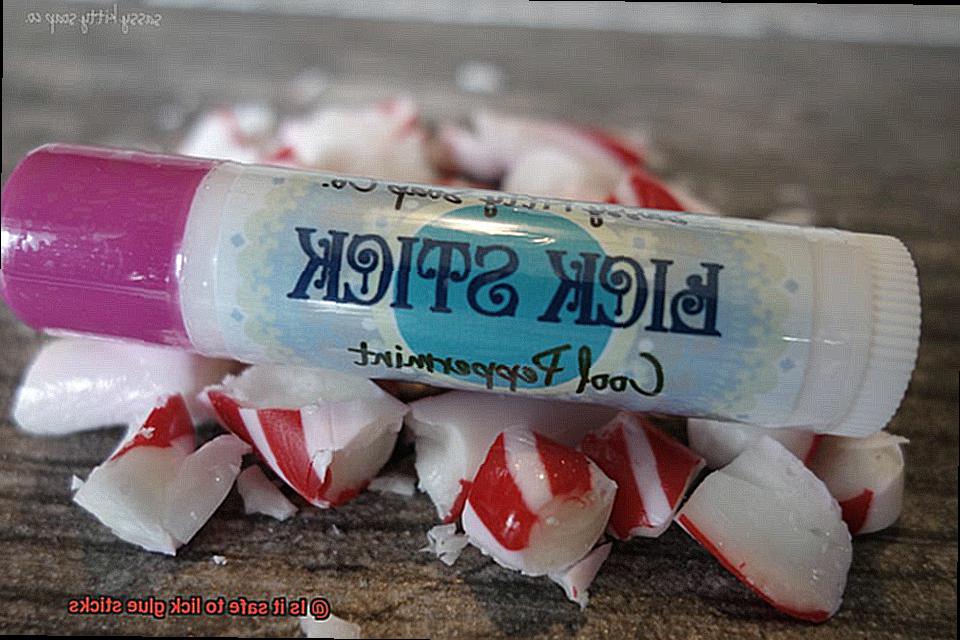
Ingestion Hazards:
Glue sticks may be made from non-toxic materials, but that does not mean they are safe to eat. Accidental ingestion can lead to stomachaches, nausea, and vomiting. It is vital to educate children about the dangers of eating glue sticks and emphasize the importance of seeking help immediately if ingestion occurs.
Skin and Eye Irritation:
Children’s curiosity knows no bounds, and they may attempt to open glue sticks and apply the adhesive directly onto their skin or eyes. This can cause irritation, redness, and even allergic reactions. Supervision is key when using glue sticks with children, teaching them proper application techniques to prevent harm.
- Teach children to apply glue sticks only on intended surfaces like paper or cardboard.
- Emphasize the importance of avoiding contact with skin or eyes.
- Encourage regular handwashing after use to prevent accidental ingestion or contact with eyes.
Proper Storage:
To ensure children’s safety, glue sticks should be stored in a safe place inaccessible to them. Locked cabinets or high shelves are ideal locations. Always check the packaging for specific storage instructions provided by the manufacturer.
Guidance and Supervision:
When using glue sticks with children, provide proper guidance and supervision throughout the process. Teach them how to use the glue stick safely, emphasizing that it should only be applied on paper or intended surfaces. Encourage creativity while ensuring safety.
- Demonstrate how to twist the glue stick up and down, avoiding excessive application.
- Teach children not to put the cap or any other objects in their mouths.
- Supervise younger children more closely to prevent accidents.

Seek Immediate Medical Attention:
Accidents happen, so it is crucial to know what steps to take if a child accidentally ingests or gets glue stick adhesive on their skin or eyes. Seeking medical attention immediately is vital. Do not induce vomiting unless instructed by a medical professional.
What to Do if Someone Accidentally Ingests Glue Stick Adhesive
Did you accidentally swallow some glue stick adhesive? Don’t panic, we’ve got you covered. Although glue stick adhesive is generally safe, it’s important to take immediate action to ensure your well-being. In this blog post, we’ll guide you through the steps to follow if this sticky situation happens to you. So, let’s dive in and learn what to do.
Step 1: Stay Calm and Assess the Situation
First things first, take a deep breath and remain calm. Assess how much adhesive you ingested and whether it contains any toxic ingredients. This will help determine the severity of the situation. If it’s a small amount of non-toxic adhesive, the risk of serious harm is generally low. However, if a large amount or toxic adhesive was consumed, immediate action is necessary.
Step 2: Spit it Out.
If you still have some adhesive in your mouth, spit it out immediately. Avoid swallowing any more of it to prevent further complications. Rinse your mouth with water to remove any residue.
Step 3: Reach for Water or Milk
Drink plenty of water or milk to dilute the adhesive and stop it from sticking to your throat or digestive system. Sip slowly and relax – this will help wash away the glue. However, do not induce vomiting unless instructed by a healthcare professional, as different types of adhesives may react differently when vomited.
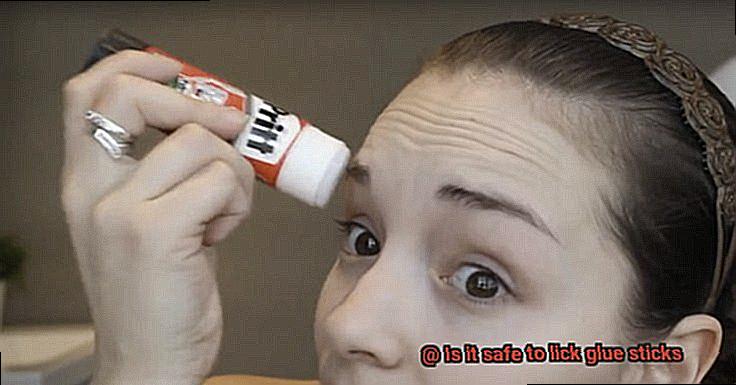
Step 4: Seek Medical Help
Contact a poison control center or call emergency services for guidance on what to do next. They are the experts and will provide you with the best advice tailored to your situation. Provide them with as much information as possible about the specific brand and ingredients of the glue stick adhesive.
Step 5: Monitor Yourself Closely
Keep a close eye on any signs of distress or allergic reactions. If you experience difficulty breathing, swelling, severe pain, or any unusual symptoms, seek immediate medical attention. Symptoms can vary depending on the adhesive and its toxicity, so it’s essential to be vigilant.

Step 6: Prevention is Key
To prevent future accidents, remember to keep glue sticks – and any other potentially harmful substances – out of reach from curious hands. Store them in a secure place where children and pets cannot access them. Educate yourself and others about the dangers of ingesting glue stick adhesive to promote awareness and safety.
The Dangers of Licking Glue Sticks
Licking glue sticks may seem like harmless fun, but it can actually put your health at serious risk. Glue sticks, commonly used for arts and crafts, are generally safe for their intended purpose. However, when ingested, these seemingly innocent sticks can become dangerous. So, before you decide to make them your next tasty treat, let’s explore the potential dangers lurking within.
First and foremost, let’s talk about choking. Glue sticks are not meant to be eaten, and when they end up in your throat or airway, they can cause a blockage. Imagine the panic when you struggle to breathe, gasping for air as the glue stick obstructs your windpipe. It’s a terrifying thought, isn’t it? Choking on glue stick adhesive can be life-threatening and should not be taken lightly. So, it’s best to keep those glue sticks away from your mouth and focus on their true purpose – bonding things together, not your taste buds.
But choking isn’t the only concern when it comes to licking glue sticks. Some of these seemingly innocent sticks contain chemicals that can irritate your body when ingested. Think about having an itchy throat or a rash all over because you decided to indulge in a little taste of that tempting adhesive. Not so fun anymore, is it? And if you happen to be allergic to certain ingredients in the glue stick, things can get even worse. Allergic reactions can range from mild skin rashes to difficulty breathing or even anaphylaxis in severe cases. The consequences of licking glue sticks go far beyond a simple discomfort; they can have serious implications for your health.
Now, let’s talk about poisoning. Even though most glue sticks are labeled as non-toxic, ingesting large amounts can still lead to gastrointestinal distress. Imagine the nausea, the vomiting, and the diarrhea that may follow your ill-advised decision to lick that glue stick. It’s not a pleasant picture, is it? Nobody wants to deal with such discomfort just because they had a momentary lapse in judgment.
And here’s another crucial point to consider: children are particularly vulnerable to the dangers of licking glue sticks. Their smaller size and developing immune systems make them more susceptible to adverse reactions. Plus, they may not fully understand the risks involved and might engage in this behavior unintentionally. As responsible adults, it is our duty to educate ourselves and others about the potential dangers and keep these tempting sticks out of the reach of children.
Edible Adhesives for Culinary Purposes
Edible Adhesives for Culinary Purposes: Stick it, Lick it, or Cake it.
Cooking and baking can sometimes require a little extra help to keep things together. That’s where edible adhesives come in. These specially formulated food-grade glues are not only safe for consumption but also versatile in their culinary applications. Let’s dive into the world of edible adhesives and explore their uses in the kitchen.
First up is the ever-popular royal icing. Made from powdered sugar, water, and egg whites or meringue powder, royal icing dries hard and is perfect for creating intricate designs on cookies or gingerbread houses. But that’s not all – it’s also an incredible edible glue that can hold together delicate fondant decorations on your cakes or cookies.
Next on the list is gum paste glue, another commonly used edible adhesive. Gum paste is a flexible icing made from confectioners’ sugar, water, and gum tragacanth or tylose powder. This versatile adhesive is great for attaching gum paste decorations to cakes or assembling different pieces of gum paste together.
But wait, there’s more. Edible adhesives come in various forms to suit different culinary needs. Some are made from gelatin, cornstarch, or vegetable gums and have a transparent appearance. These glues work wonders when attaching wafer paper or edible gold leaf to your creations.
It’s important to note that not all adhesives used in culinary applications are safe to eat. Regular craft glues or household glues contain toxic ingredients that can be harmful if ingested. When using edible adhesives, always check the ingredients list and make sure they are safe for consumption.
Remember to use edible adhesives sparingly and only in areas that won’t be directly consumed. While these glues are safe to eat in small quantities, it’s best to minimize the intake of non-nutritive substances.
Takeaways and Tips for Using Glue Sticks Safely
Glue sticks are a versatile tool for crafts and bonding, but it’s important to prioritize safety to avoid any sticky situations. This article will provide key takeaways and tips for using glue sticks safely to ensure a worry-free experience.
Read and Follow Instructions:
The first step to using glue sticks safely is to read and follow the instructions provided by the manufacturer. These instructions outline proper usage, any age restrictions, and safety precautions. Following these guidelines will ensure that you are using the glue stick correctly and minimizing any potential risks.
Keep Away from Little Ones:
Glue sticks may look tempting, but they are not meant for eating. It is crucial to keep glue sticks out of reach of young children who might mistake them for food. Ingesting glue can lead to digestive discomfort or other health issues. Supervising children during glue stick usage and storing them securely after each use is essential to prevent accidental ingestion.
Avoid Glue on Skin:
Glue sticks are excellent for paper, but not for your skin. Prolonged contact with glue can cause skin irritation or allergic reactions in some individuals. If you accidentally get glue on your skin, wash it off immediately with soap and water to prevent any discomfort or adverse reactions.
Work in a Well-Ventilated Area:
Some glue sticks may emit fumes during use, which can be bothersome to sensitive individuals. To ensure a comfortable working environment, choose a well-ventilated area or use a fan to circulate the air. This will keep your nose happy while unleashing your creativity.
Be Mindful of Eye Safety:
Glue sticks should never come into contact with your eyes. If any glue accidentally gets in your eyes, rinse them thoroughly with water right away. If you experience persistent discomfort or unusual symptoms, seek immediate medical attention. Protecting your eyes from glue stick mishaps is crucial for maintaining good eye health.
Conclusion
In conclusion, licking glue sticks is a perilous endeavor that can have serious consequences for your health. Glue sticks were never intended to be licked or consumed; they were crafted solely for adhesive purposes. Though they may claim to be non-toxic and generally safe under normal circumstances, ingesting the adhesive from a glue stick can unleash a host of health problems.
The perils of licking glue sticks are manifold and alarming. First and foremost, there is the ever-present danger of choking on the sticky substance itself. Additionally, the additives and chemicals present in the adhesive could prove toxic if ingested in large quantities. Allergic reactions are also a distinct possibility, as well as gastrointestinal distress that could leave you feeling miserable.
These risks become even more pronounced when it comes to children, who are far more susceptible to negative effects. Their curious nature and lack of awareness make them prime candidates for accidental ingestion.
To guarantee safety while using glue sticks, it is crucial to exercise extreme caution and adhere to some fundamental guidelines. Keep these tempting tubes out of reach from children’s wandering hands and educate them about the potential dangers associated with consuming glue stick adhesive. Always consult the manufacturer’s instructions before use, ensuring you follow them diligently. Furthermore, avoid applying adhesive near sensitive areas such as eyes or skin to prevent any discomfort or harm. Lastly, work in a well-ventilated space so that harmful fumes don’t infiltrate your lungs. And remember: store those sticky wonders securely in a designated spot far away from prying fingers.
If by some unfortunate turn of events you do end up ingesting glue stick adhesive, remain calm but act swiftly. Spit out any remaining gunk immediately and rinse your mouth with water or milk to dilute any potential harm. Seek medical assistance without delay and keep an eye out for any signs of distress or allergic reactions.
It’s worth noting that there are edible adhesives available specifically for culinary purposes if you require a safe and consumable alternative.

